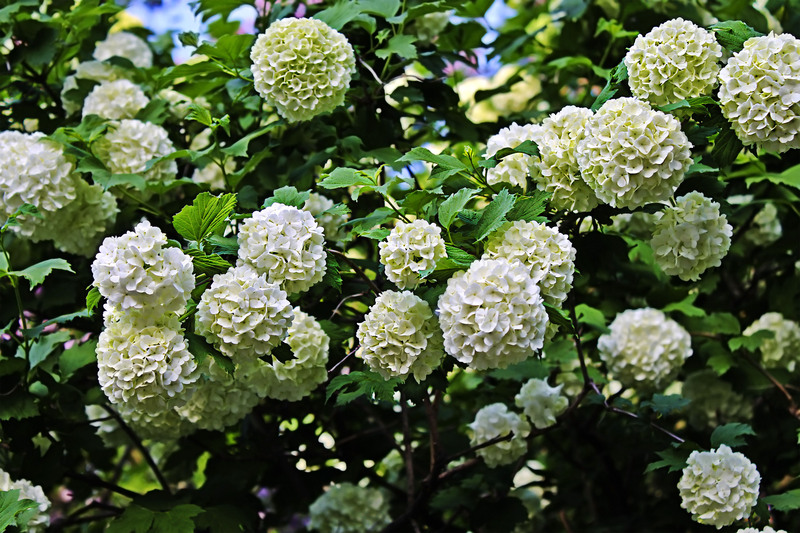Beauty and function: Vertical gardening in action
Posted on 15/09/2025
Beauty and Function: Vertical Gardening in Action
In the world of modern landscaping and urban design, few trends have blossomed as broadly or beautifully as vertical gardening. Combining form with function, these striking installations transform plain walls and compact spaces into lush green oases. The fusion of aesthetics and pragmatism isn't just for show--vertical gardens deliver a host of environmental, social, and health benefits. This comprehensive article explores the dynamic world of vertical gardening, showcasing its beauty, its function, and how you can bring this green revolution into your own space.

What Is Vertical Gardening?
Vertical gardening--also known as a living wall, green wall, or vertical plant installation--is the practice of growing plants upward along a structure rather than spread out across the ground. Rooted in both ancient traditions and cutting-edge innovation, this gardening style is redefining urban spaces and residential landscapes alike.
The Origins and Evolution of Vertical Gardens
While the concept of raising plants upward isn't new (think of the legendary Hanging Gardens of Babylon), the modern iteration gained traction due to urbanization and the need to utilize limited space efficiently. In today's cities, where land is scarce and demand for greenery is high, living walls have become iconic design solutions for homes, offices, public buildings, and even outdoor facades.
How Vertical Gardens Blend Beauty and Function
Vertical gardening's appeal lies in its unique blend of aesthetic allure and practical benefits. Here's how these dynamic gardens add value to both private and public spaces:
Aesthetic Impact: Enhancing Visual Appeal
- Living Art Installations: Vertical gardens often serve as dynamic art pieces, transforming dull walls into vibrant, living canvases. The endless variety of plant textures, colors, and arrangements spark visual interest that static furnishings simply cannot match.
- Curb Appeal for Homes: A well-designed vertical garden can dramatically boost a property's curb appeal, adding a touch of luxury and sophistication that increases its overall value.
- Flexible Design Options: Vertical planters allow for creative installations, from simple herbal arrangements to elaborate patterns designed to echo wallpaper or mural effects.
Functional Advantages: Beyond Good Looks
- Improved Air Quality: Plants in vertical gardens filter dust, toxins, and carbon dioxide, producing fresh oxygen and improving surrounding air quality--especially important in densely populated cities.
- Thermal Regulation: Living walls help insulate buildings, keeping them cooler in summer and warmer in winter. By reducing temperature fluctuations, they contribute to energy savings and enhance occupant comfort.
- Sound Dampening: The dense arrangement of plants and soil absorbs urban noise, creating a peaceful atmosphere even in bustling environments.
- Greater Space Efficiency: For urban apartments or homes with small yards, vertical gardening maximizes growth in minimal space, making it possible to grow flowers, food, and herbs where traditional gardens won't fit.
Popular Types of Vertical Gardens
Vertical gardens come in a variety of styles and systems, catering to different budgets, aesthetics, and functional requirements. Here's a closer look at some popular options:
1. Living Walls
These installations typically feature modular panels filled with soil, hydroponic systems, or pockets for individual plants. Living walls can be freestanding or attached directly to exterior or interior walls, making them a dramatic focal point indoors and out.
2. Vertical Planters and Pocket Gardens
Perfect for small spaces or balconies, these systems use rows of hanging or wall-mounted containers, fabric pockets, or stacked planters. This approach is especially popular for growing herbs, succulents, and trailing plants.
3. Trellis and Climbing Gardens
By training climbing plants such as ivy, jasmine, or beans on structured supports, you can quickly create a lush vertical display. This style works beautifully along fences, entryways, or even as spectacular privacy screens.
4. DIY Vertical Garden Walls
From repurposed pallets to shoe organizers converted into pocket planters, the DIY approach offers endless creative possibilities for gardeners of all skill levels. Many people enjoy constructing their own vertical gardening systems as personal, one-of-a-kind installations.
Choosing the Right Plants for a Vertical Garden
Not all plants are well-suited for vertical growth. Selecting the right species ensures longevity, easy maintenance, and optimal visual effect.
Key Considerations:
- Light Requirements: Assess whether your vertical space is shady, partially shaded, or in full sun. Choose plants accordingly to ensure healthy growth.
- Watering Needs: Vertical gardens can dry out faster than traditional beds. Opt for drought-tolerant plants or install an efficient irrigation system to maintain soil moisture.
- Root Structure: Plants with compact, fibrous roots are ideal. Deep-rooted species may struggle in shallow soil systems.
Popular Plant Choices for Vertical Gardens
- Herbs: Basil, thyme, mint, parsley, oregano
- Leafy Greens: Lettuce, spinach, arugula, Swiss chard
- Succulents: Sedum, echeveria, and other drought-resistant varieties
- Flowering Plants: Petunia, impatiens, lobelia, nasturtium
- Climbers: Ivy, clematis, jasmine, passionflower
Pro Tip: Mix plant types--such as ferns and succulents--to add layers of visual interest and ensure season-round beauty.
Design Tips: Making Your Vertical Garden a Showpiece
The secret to a striking vertical gardening installation is thoughtful design. Here are key strategies to help you achieve both beauty and balance:
Color and Texture Play
- Contrast Leaves and Flowers: Pair broad, glossy leaves with delicate, trailing stems for visual drama.
- Use Color Blocking: Plant species in bold bands or geometric patterns for an artistic effect.
- Add Edible Plants: Blend ornamental and edible plants--such as strawberries or cherry tomatoes--for a garden that's as productive as it is beautiful.
Balance and Scale
- Match the size of your vertical garden to your available space--small balconies may call for slim, modular units, while expansive walls can showcase large living walls.
- Consider focal points: Position bold, colorful plants at eye level, and use greenery to soften architectural lines or hard corners.
Lighting and Watering
- Be mindful of both natural and artificial lighting. Supplemental grow lights can extend productivity in less sunny spaces.
- Automatic drip irrigation or self-watering planters simplify maintenance and ensure even water distribution across the whole garden.
Sustainable and Eco-Friendly Benefits of Vertical Gardens
In addition to their obvious beauty, vertical gardens bring striking environmental and social benefits:
Urban Greening
- Vertical gardens introduce green space into cities, countering the 'urban heat island' effect for cooler, healthier neighborhoods.
- They support urban biodiversity, providing hosts and habitats for insects and birds.
Energy Savings
- By insulating buildings, living walls reduce heating and cooling costs--making them a smart addition for eco-conscious property owners.
Health and Wellness
- Vertical gardening has been proven to reduce stress and improve concentration in both work and home environments. Being surrounded by greenery boosts mood and provides tangible psychological benefits.
Vertical Gardening: A Step-by-Step Guide to Getting Started
Ready to bring beauty and function home? Follow these steps to launch your own vertical garden project:
- Select Your Location: Identify a suitable wall, fence, or structure with sufficient light and easy access for maintenance.
- Choose a System: Decide between ready-made vertical planters, living wall panels, trellis systems, or DIY solutions based on your budget and skill set.
- Plan Plant Placement: Organize plants by height, light, and water needs for optimal coverage and health.
- Install Irrigation: Set up automatic watering or opt for self-watering containers--especially important for larger or sun-exposed installations.
- Plant and Arrange: Begin planting, starting from the bottom up to prevent soil spillage. Ensure tight placement for dense coverage as the garden matures.
- Maintain Regularly: Prune, fertilize, and replace plants as needed to keep your vertical garden thriving and beautiful all year long.
Overcoming Common Challenges in Vertical Gardening
Successful vertical gardening isn't without its hurdles. Here's how to address the biggest issues:
1. Moisture Management
Walls can create microclimates--some areas too wet, others too dry. An even irrigation system and careful plant selection are key to preventing both drought and root rot.
2. Plant Replacement
Inevitable plant loss occurs over time. Choose modular systems or removable pockets to streamline replacements and rotations.
3. Structural Load
Ensure your chosen wall or fence can safely support the added weight of moist soil and mature plants. When in doubt, consult with a contractor or use lightweight, soilless media.

Inspirational Examples of Vertical Gardening in Action
For those seeking creative inspiration, consider these standout examples of beauty and function in vertical gardening:
- Urban Rooftop Retreats: In dense cities, vertical gardens reclaim rooftops, providing fresh air and home-grown vegetables for apartment dwellers.
- Corporate Buildings: Many offices now feature lush living wall installations that energize staff, purify indoor air, and signal eco-leadership to visitors.
- Home Entryways: Vertical gardens flanking front doors or entry gates create memorable first impressions and showcase resident creativity.
- Schools and Community Centers: Edible living walls teach sustainability and nutrition to children, turning education into a hands-on experience.
Conclusion: Vertical Gardening for the Future
The marriage of beauty and function in vertical gardening stands as a vibrant testament to human ingenuity. Whether you dream of a leafy retreat on your apartment balcony or aspire to green your business facade, vertical gardens present sustainable, stylish solutions tailored to the needs of the modern world.
Ready to get started? With the right planning and creativity, anyone can experience firsthand the transformation vertical gardening brings--in aesthetics, in function, and in the sheer pleasure of growing upward. Invest in beauty. Embrace function. And watch your world flourish in every direction.

